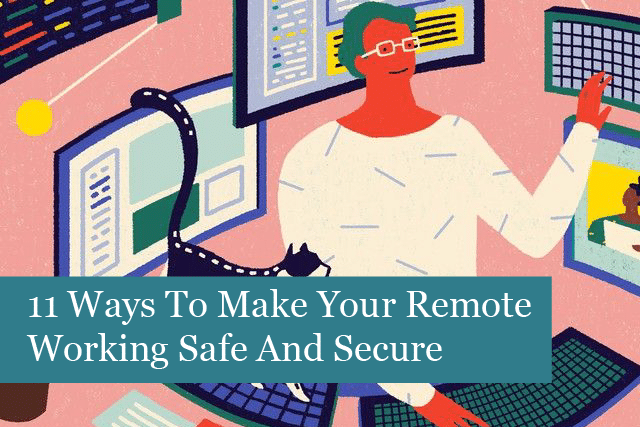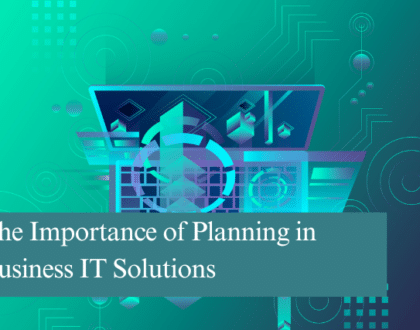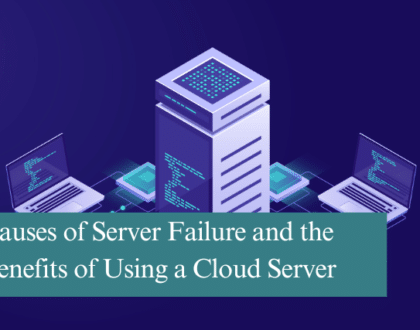
The pandemic has made remote working more crucial than ever before. And it looks as if we’re headed into a new year with lockdowns and restrictions, meaning more people will be working from home than in the past.
For this reason, security has become essential. In the beginning of the pandemic, many of us had to start working from home without a formal setup. This means secure connections were not planned or enforced for remote connections.
To prepare for the coming months, we’ve put together a list of methods you can take to make your remote workers more productive and secure.
1). Update Antivirus Software
Antivirus software is a key tool when it comes to security, and they require regular updates to stay effective in the fight against viruses, malware and more.
Update:
- All antivirus on your network and platforms
- Antivirus and malware on all company devices
If employees are using their own devices, then it’s imperative to ensure they have strong antivirus and malware tools installed.
2). Use a VPN Service
Another way to improve security is to use a VPN service. A VPN is a “virtual private connection,” which creates a tunnel on the Internet from your computer to the company network.
Be sure that all employees understand that shutting down the computer/device will end the VPN’s connection. Then it will be necessary to re-establish the VPN connection when they need to work and access the company network next time.
3). Use MFA (Multi-Factor Authentication)
MFA protects all logins and are used as a second line of protection for work accounts. All you have to do is enter your password, then you’ll be asked for another piece of information to validate the login. This may be entering a code that’s been sent to your phone, for instance,
Using multi-factor authentication makes it much harder for cybercriminals to access your company’s network. While they may have the password, the criminal won’t have the MFA information to successfully login.
4). Lock Computers
GDPR has made data protection mandatory for many types of businesses. Just once glance can violate the GDPR, so it’s a good idea to make sure everyone, including remote workers, locks their computers and devices when not working.
When working from home or another location, it’s quite easy for another person to innocently glance over at the screen. It happens. This is why it’s a good idea to always lock devices when they’re not in use. Data will be safe, and your company will stay on the good side of GDPR requirements.
5). Use a Password Manager
Using a password manager can add another layer of security to company passwords. It’s difficult for most people to come up with unique passwords that are strong. It’s human nature to reuse passwords because we can more easily remember one password, rather than several.
Using a password manager takes away the need to create and remember various difficult passwords. Several password managers make it easy to set up a company account, with individual logins for employees. And it’s possible for the admin to assign levels of security for certain logins. This means that a person who doesn’t have the right level of authority to use or review certain login information won’t be able to access it.
6). Uninstall Software That’s Not Needed
Unnecessary software can create security issues, though many people don’t realise this. The problem rears up when the software needs a security update. If that update isn’t applied, then the software creates a dangerous vulnerability that cybercriminals can use to get access to valuable data.
Removing the software remove the vulnerability.
7). Install All Updates
Updates for the business network and devices are also important. While some devices connected to the company network may receive the updates just fine, remote workers may not receive these updates for their company devices. It’s also possible they may forget to update their personal devices, as well.
So, make it a rule that everyone must check for and install updates for all software/hardware that’s being used for work. This applies to the company network, as well. This way, hackers will have a much more challenging job trying to get at company data.
8). Take a Picture of Computer Setup
Before heading off to remote working, it’s a good idea to have everyone take a picture of how their computer is setup at work. The picture should include all cables, devices, and more.
This is important because when everyone heads back to the office, they’ll know exactly how their devices need to be reconnected again! You save time and effort getting everyone setup again.
9). Back Up Everything
At the office, it’s important to ensure that all data is backed up, including data for remote workers. This may mean that all documents are saved in the cloud such as with Office 365 or another cloud service. This makes it much easier to collaborate in real-time, and store documents in a managed environment. Each document can be set up with tags and made searchable, so you’ll never have to lose another important contract again.
10). Turn Off Automatic WiFi Connections
Many of our devices are set to automatically connect to WiFi. Plus, many devices save our past WiFi connections. Some of these connections may not be very secure. And if you happen to run errands and pass by that WiFi connection, it’s possible your device could try to reconnect.
It’s easy to go through and delete past WiFi connections. Just open your devices WiFi list and review each connection. If the connection was for a store or restaurant, for instance, then select “Forget this Network.” Your device will delete the past connection and will not be able to sign on automatically. Remember it will be necessary to manually connect next time you’d like to use that specific WiFi connection.
11). Use a Separate Network
Another way to improve security is to use a separate network for remote employees. This is especially helpful if they will be using their own devices. This way, your company’s main network will be secure and protected. Remote workers’ devices, if infected, won’t be able to cause problems to the main network.
This is also a good idea for when everyone heads back to the office. Rather than using it for employees, you can set up a separate network for guests and visitors. The main network will be kept more secure and your guests will still have a great connection to use while at the office.
Recommended Posts

The Importance of Planning in Business IT Solutions
11th April 2025


